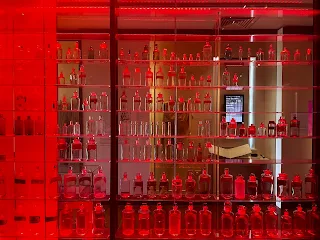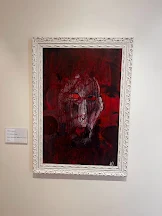The Bethlem Royal Hospital initially opened in 1247 in Central London, though initially it specialised in caring for the poor. It was only until the 14th century that it began to accept patients suffering from mental illnesses, and eventually the hospital was fully devoted to caring for people perceived as "mad" and "insane" in society. The hospital then moved three times in the next few hundred years, eventually drifting south of the river and in 1930 moved to Monks Orchard, a small area near Beckenham and on the border of Croydon and Bromley.
The hospital itself is known for its often inhumane treatment of its patients, with reports of people being tortured in many heinous ways, often relating to now outdated medical practices. For a while, people could even pay to tour the hospital, and they didn't even hide the fact that patients were "often treated like animals". The hospital's nickname, Bedlam, soon became a byword for chaos, and it was mentioned in literature as such. You can read more about the hospital's history here.
Thankfully, though, mental illnesses (and mental health in general) is now perceived in a more positive light, and the hospital doesn't shy away from its murky past. And you can visit part of the hospital grounds, though thankfully you wouldn't be visiting the wards themselves. Instead, there's a museum and gallery, which is said to celebrate those with mental health problems. You could either go in a group, or visit for free from Wednesday to Saturday, and I chose the latter.
One thing I didn't expect to find at the grounds was how green the place is. The hospital itself was once a large country manor, and the London border wasn't too far from here, but I thought it would have looked much bleaker, having heard of its reputation. Slightly cautious of what I was going to see, and not entirely sure if I was correctly going to the museum, I entered the grounds, and after making my way through the entrance and up the staircase, I began my visit.


There are also two other exhibits that were running - one had veils hanging from the ceiling of an elaborate room, with chandeliers and countless coats of arms. Images of people suffering were projected onto the veils; it may not be the most interactive exhibit, but it's simple and effective at conveying the inner struggles of people.
The other exhibit is by artist Alison Lapper, alongside Marc Quinn and Rankin. Specifically, it's about Lapper's grief after losing her son, Parys, who suffered from mental health issues. It feels quite sparse, with paintings lining the wall, depicting the pain she and Parys both experienced. The centre, though, is filled with two sculptures by Quinn, depicting a disabled, pregnant woman; and another of mother and child - a contrast to the grief, though also sorrowful considering what Lapper had to go through. Those sculptures are of her, in fact, and a larger model were displayed at Trafalgar Square's fourth plinth. Possibly the most poignant display, however, is that of Parys' belongings, which can be found at the back of the exhibit. The entire place makes one think, and I thoroughly recommend everyone to go and visit (it's open until the 1st June).
The museum doesn't try to get in your face. There are no exhibitions that require membership fees, and whilst there is a gift shop, it's also not made out to be an important part of the museum. I personally preferred attending at noon on a Saturday, and for a while, I was the only visitor - it allows you to properly think and take in the information, unlike other museums which are usually full of chatter. It's obviously not an upbeat environment, but it is definitely a place I'd advise you to visit.
NHS website with links to mental health services for anyone who is interested.



Comments
Post a Comment